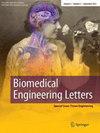Sneaky emotions: impact of data partitions in affective computing experiments with brain-computer interfacing
IF 3.2
4区 医学
Q2 ENGINEERING, BIOMEDICAL
引用次数: 0
Abstract
Abstract Brain-Computer Interfacing (BCI) has shown promise in Machine Learning (ML) for emotion recognition. Unfortunately, how data are partitioned in training/test splits is often overlooked, which makes it difficult to attribute research findings to actual modeling improvements or to partitioning issues. We introduce the “data transfer rate” construct (i.e., how much data of the test samples are seen during training) and use it to examine data partitioning effects under several conditions. As a use case, we consider emotion recognition in videos using electroencephalogram (EEG) signals. Three data splits are considered, each representing a relevant BCI task: subject-independent (affective decoding), video-independent (affective annotation), and time-based (feature extraction). Model performance may change significantly (ranging e.g. from 50% to 90%) depending on how data is partitioned, in classification accuracy. This was evidenced in all experimental conditions tested. Our results show that (1) for affective decoding, it is hard to achieve performance above the baseline case (random classification) unless some data of the test subjects are considered in the training partition; (2) for affective annotation, having data from the same subject in training and test partitions, even though they correspond to different videos, also increases performance; and (3) later signal segments are generally more discriminative, but it is the number of segments (data points) what matters the most. Our findings not only have implications in how brain data are managed, but also in how experimental conditions and results are reported.鬼鬼祟祟的情绪:脑机接口情感计算实验中数据分区的影响
脑机接口(BCI)在机器学习(ML)的情感识别中显示出前景。不幸的是,如何在训练/测试分割中划分数据经常被忽视,这使得很难将研究结果归因于实际的建模改进或划分问题。我们引入了“数据传输速率”结构(即,在训练期间看到的测试样本的数据量),并使用它来检查几种条件下的数据分区效果。作为一个用例,我们考虑使用脑电图(EEG)信号来识别视频中的情绪。我们考虑了三种数据分割,每一种都代表一个相关的BCI任务:独立于主题(情感解码)、独立于视频(情感注释)和基于时间(特征提取)。模型性能可能会发生显著变化(例如从50%到90%不等),这取决于数据的划分方式和分类精度。这在所有测试的实验条件下都得到了证明。我们的研究结果表明:(1)对于情感解码,除非在训练分区中考虑一些测试对象的数据,否则很难达到高于基线情况(随机分类)的性能;(2)对于情感注释,在训练和测试分区中使用来自同一主题的数据,即使它们对应不同的视频,也可以提高性能;(3)后期的信号段通常更具判别性,但最重要的是段(数据点)的数量。我们的发现不仅对如何管理大脑数据有影响,而且对如何报告实验条件和结果也有影响。
本文章由计算机程序翻译,如有差异,请以英文原文为准。
求助全文
约1分钟内获得全文
求助全文
来源期刊

Biomedical Engineering Letters
ENGINEERING, BIOMEDICAL-
CiteScore
6.80
自引率
0.00%
发文量
34
期刊介绍:
Biomedical Engineering Letters (BMEL) aims to present the innovative experimental science and technological development in the biomedical field as well as clinical application of new development. The article must contain original biomedical engineering content, defined as development, theoretical analysis, and evaluation/validation of a new technique. BMEL publishes the following types of papers: original articles, review articles, editorials, and letters to the editor. All the papers are reviewed in single-blind fashion.
 求助内容:
求助内容: 应助结果提醒方式:
应助结果提醒方式:


